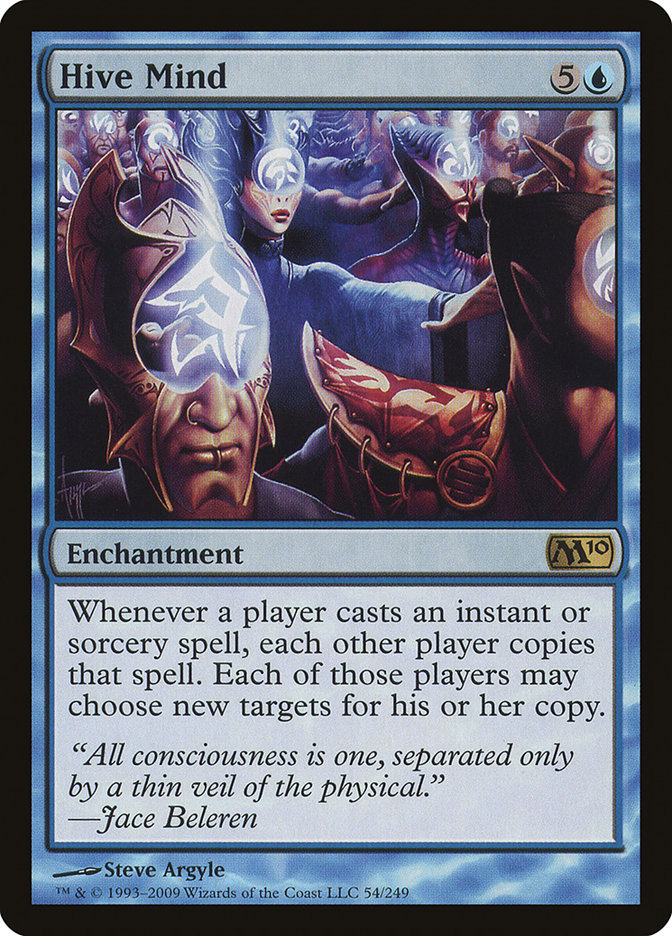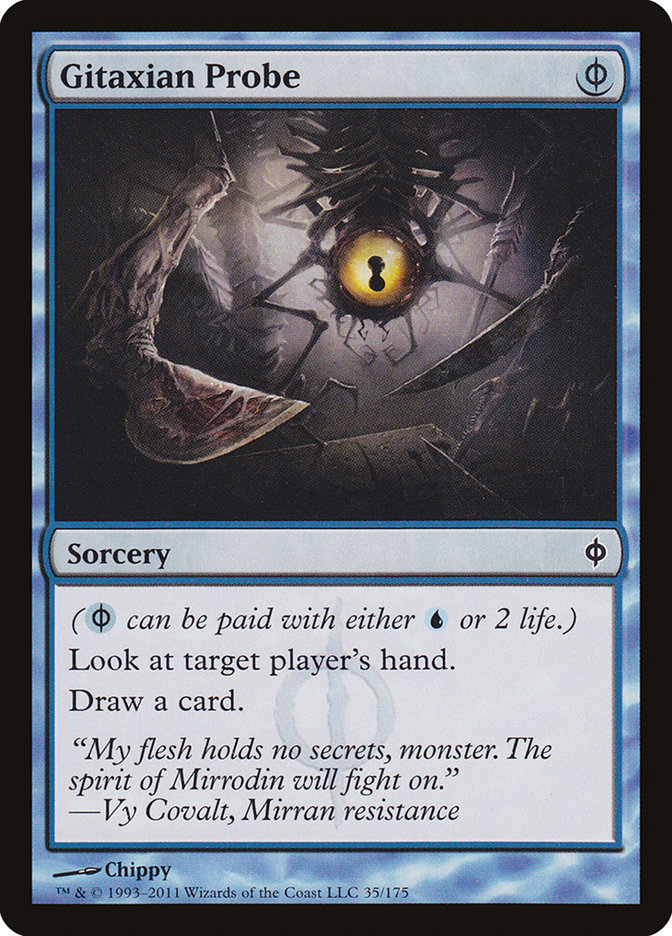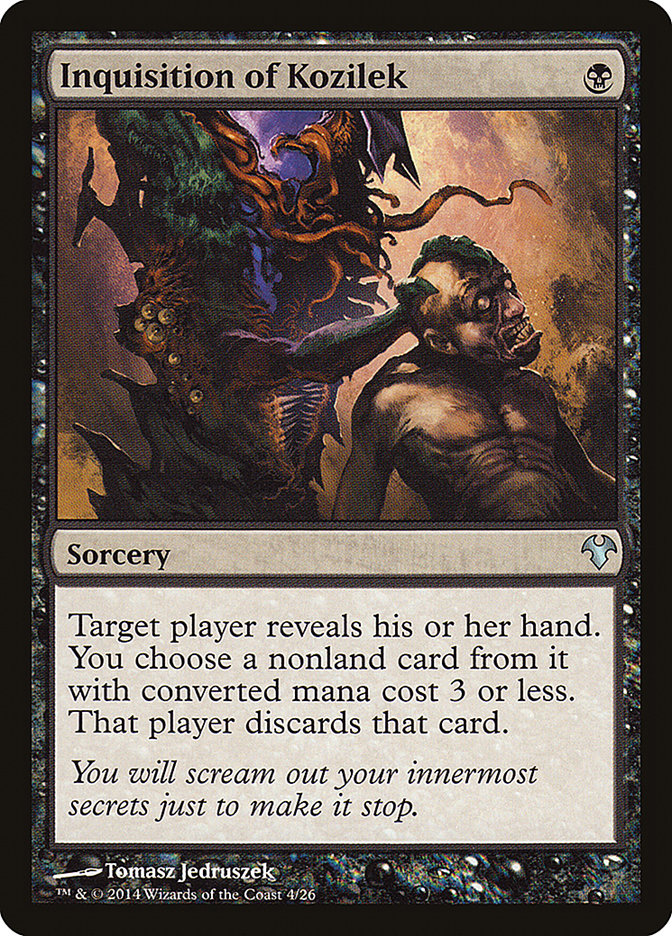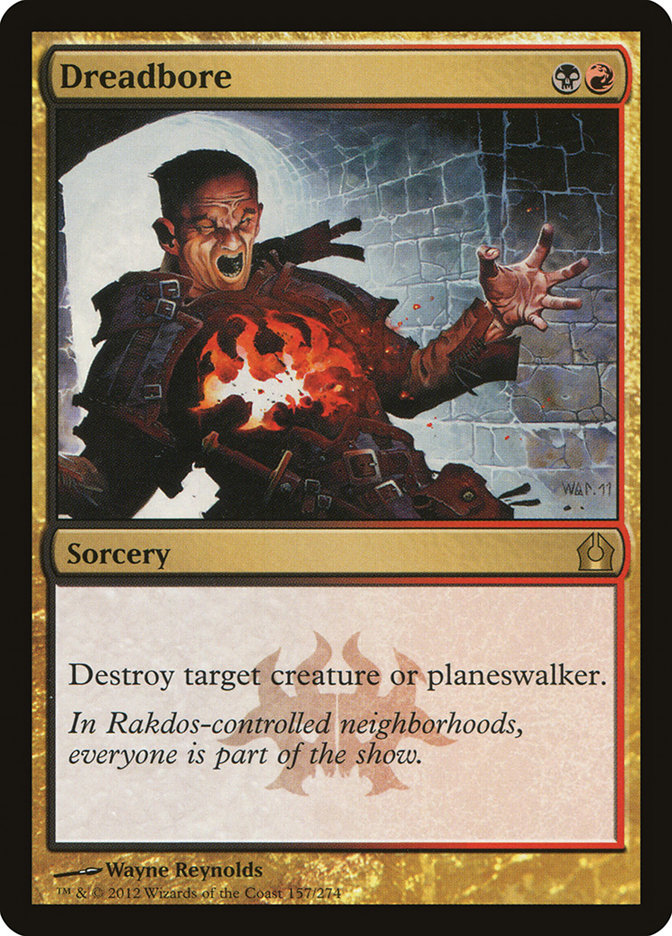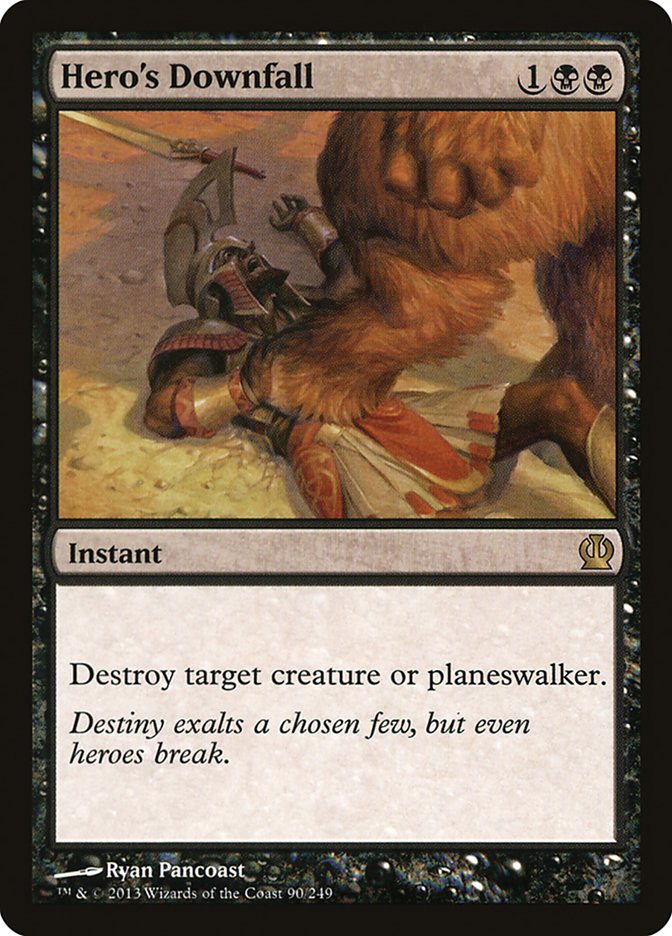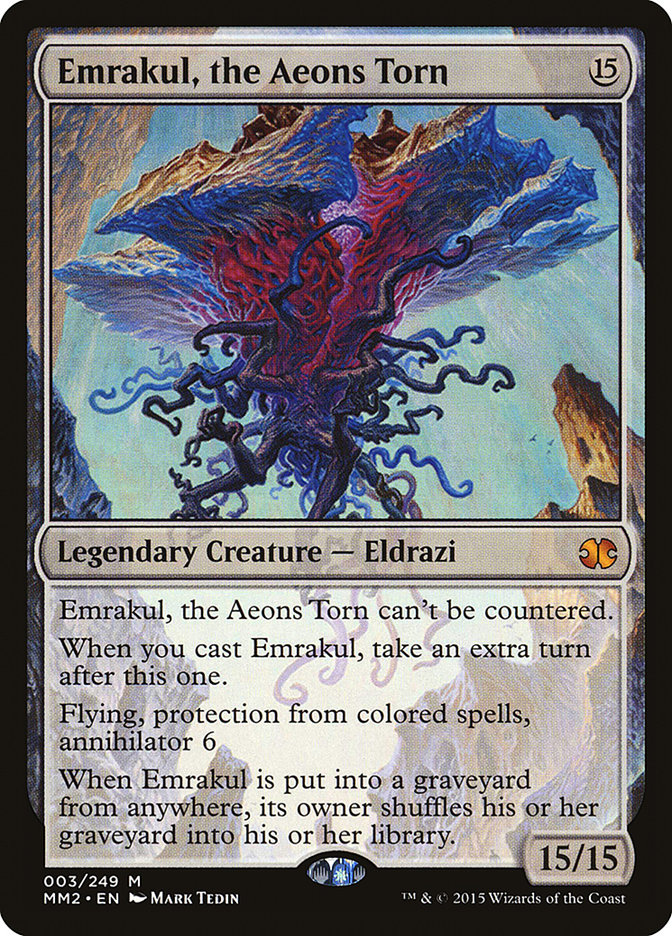In Magic, one of the first things that tends to happen when someone gets a good idea is that everyone ends up working on that good idea.
There’s nothing wrong with this. It’s just the way of things. I still recall, way back in the day, people speaking loathingly of “netdeckers,” the evil people who would go online to find a list rather than lovingly crafting their own. For many players, the netdecker was a reviled beast, worthy of contempt, known for wallowing in their hunger for wins.
Well, these days, “netdecking” is just the norm.
It’s even essentially inevitable at this point. Any good idea is simply going to disseminate. As I’ve written about before, decks really aren’t something we build, but rather they are something we discover. While there are some rare decks that we can say, “yes, this idea originates from Gerry Thompson” or “this is credited to Michelle Bush,” the fact of the matter is, for the most part, most decks emerge in many places all at once.
There are exceptions, of course, but even then, the deck pioneer is out there, really more in a world of discovery than creation. The raw materials for the deck already exist before any deck “builder” gets there; for the most obvious decks, they are like a mountain peak everyone can see, beautiful and not too high and out of reach. Many will get to it, merely by having the will to do so.
That’s why, for the most part, we don’t lend much in the way of deck attribution to archetypes themselves, though it can still be useful to think about specific builds of decks.
I started working on Nahiri, the Harbinger decks largely because of a conversation I had in #GPNY with Zac Elsik, Gerry Thompson, and Tom Ross.
We were all talking about Modern decks we like, and I got to look at a version for the first time. I was aware of Nahiri, the Harbinger as a precursor to horrible death at the hands of Emrakul, the Aeons Torn, but I hadn’t gone through the work to build it. Looking at the physical cards, I loved the look of it. I had to build it myself.
I had most of the cards on Magic Online, and I took my own version of the deck for a spin. I tried one version, then another, and finally ended on this:
Creatures (7)
Planeswalkers (4)
Lands (25)
Spells (25)

For the most part, I liked the deck a lot. But one of the things I absolutely hated was that I’d be playing against another deck, and I’d be scared to death of casting Nahiri, the Harbinger. It felt like practically every time I cast it, I would die.
Now, I’m sure that my experience was actually a bit unlucky. But against so many opponents, it felt so bad to tap out, I started thinking maybe I should just start using Gitaxian Probe.
While I was giving up on the deck, another player was getting ready to take down a big event.
Creatures (6)
Planeswalkers (4)
Lands (24)
Spells (26)

Peter’s deck was actually quite similar to mind, albeit with a few numbers tweaked here and there. The largest set of differences were in his sideboard, but it did make me wonder if a part of the problem was simply my higher reliance on Spell Snare and Mana Leak over Remand and Cryptic Command. Even so, playing out some games, I was still interested in knowing what was in my opponent’s hand, and I didn’t want to be casting more Vendilion Clique.
I was already thinking about the obvious: what about plugging the Nahiri, the Harbinger / Emrakul, the Aeons Torn engine into another deck? Certainly, you could do it in any number of ways. The mana requirements were not actually all that restrictive, and there was an obvious pairing to match the deck with that seemed a bit better than Gitaxian Probe.
I tried a bunch of different builds of the deck, and initially I liked it quite a bit better. My two inspirations were a strange-looking build of a Mardu deck that ran three copies of Nahiri, the Harbinger and a few of Asylum Visitor, and Paul Rietzl’s deck from Pro Tour Oath of the Gatewatch.
Creatures (8)
Planeswalkers (4)
Lands (23)
Spells (25)

Mashing the two together, I had a deck I mostly liked. I was finding myself with more than a few problems with obviously unfair decks, but also with planeswalkers, especially monstrous ones like Karn Liberated. Ultimately, I felt like the only answer was to really, really commit to being able to have a shot at killing the planeswalkers.
Here’s my most recent build of the deck:
Creatures (4)
Planeswalkers (8)
Lands (23)
Spells (25)

There were some really exciting things that were happening once you embraced Asylum Visitor. Obvious, it wasn’t as powerful a card-drawing engine as some other options, but this wasn’t a thing you’d have happen:
The power of Emrakul couldn’t be overstated; however, it did come with constraints. Yes, you could absolutely take the risk of Dark Confidant triggering on Emrakul, but it was still a pretty frightening thing to contemplate. You might not necessarily die, but it sure seemed likely. Similarly, Abbot of Keral Keep was a card that you might otherwise want to consider, but without an Emrakul in your library, Nahiri, the Harbinger becomes so much weaker, it feels like you’ve practically torn the card in two.
With only the tiny handful of creatures in the deck, Kolaghan’s Command became less reasonable.
Still, there is a part of me that just wants to embrace my inner Hellfire Club and go full-on Planeswalker Control. It could be that that is the way I should be building this deck, but, candidly, I keep jumping back and forth with how to build it, as each stance I take seems to make the deck fall down against something else.
Asylum Visitor is a strange part of the deck for many reasons. First of all, with eight ways to trigger madness, it often is essentially coming down as a bonus card. Second, the extra point of power over a Dark Confidant can lead to shorter games as well as trades with cards like Wild Nacatl. Third, with the large number of instants in the deck, you can sometimes get multiple triggers off a single Asylum Visitor.
All of this probably makes it sound like it is a totally awesome card.
Well, Dark Confidant it is not. But what is, besides Bob?
An unanswered Dark Confidant can run away with the game. Asylum Visitor is merely “fine.” Ultimately, I could easily see replacing it with other cards, but for now, I’m still on Asylum Visitor for the deck.
I’ll be hitting #GPCharlotte soon. I know I’ll have this deck with me, and a few others just in case. I almost went a little bonkers and sleeved up an Allies deck, but thankfully Matt Severa talked me out of it. I feel as if, as much as I like the Mardu Nahiri deck, I keep tossing around because inevitably I find some opponent like Dredgevine that makes me want to have more graveyard hate, and after I find the room for it, I find some other opponent, like Affinity, decides to tear me up because I’ve shirked on Stony Silence. Then, cutting some Painful Truths, I find another opponent tearing me down because I can’t keep up with their Dark Confidant.
Modern is a bit of pickle. You can bet I’ll be excited to go back to my precious Standard come #GPMinneapolis in another week. Until then, I’ll be slinging Modern until I’m required to turn in my final version of a list. Wish me luck!


